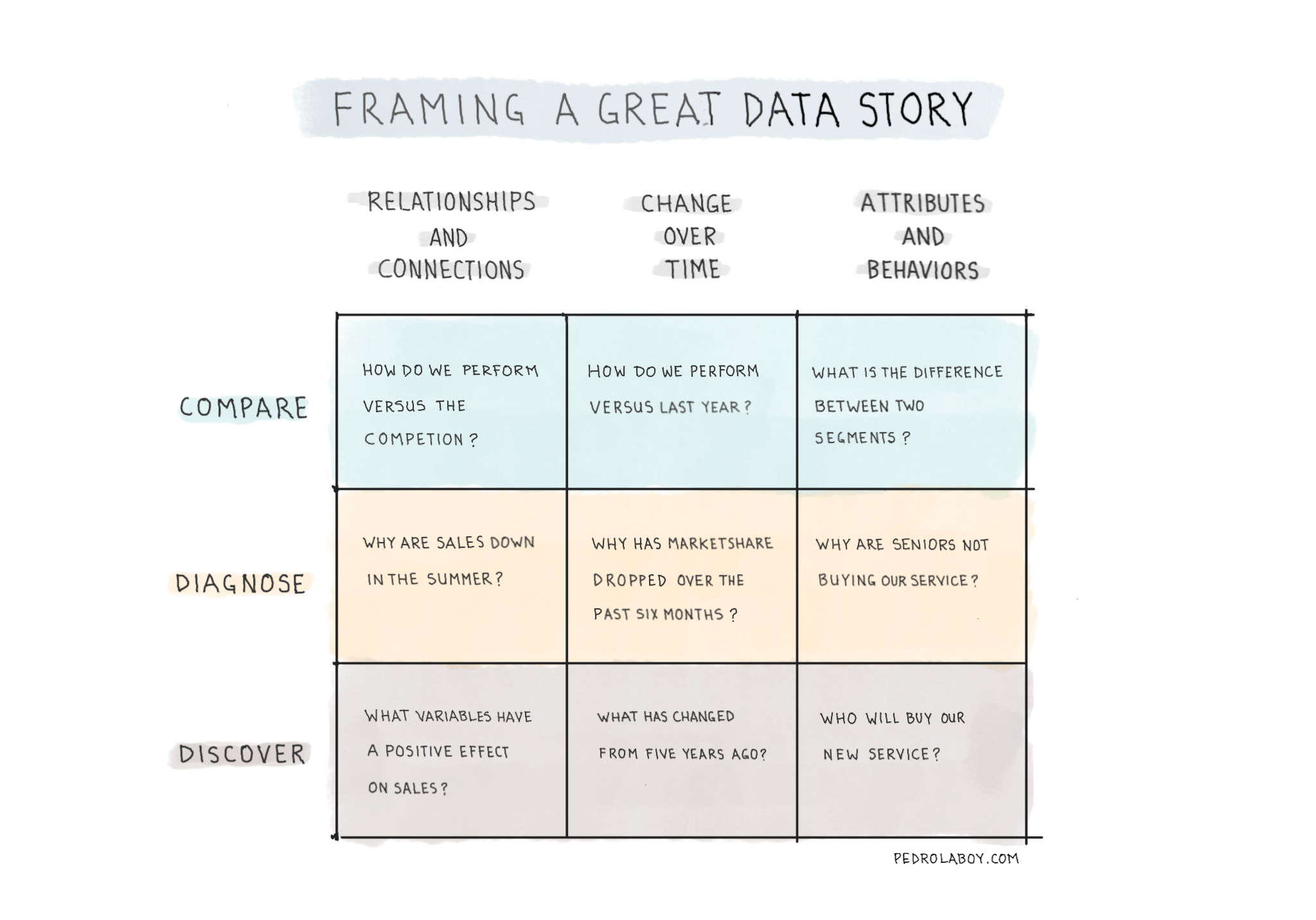Telling a great data story begins with framing the what and the how of the questions we would like to answer. We can use our data to compare, diagnose and discover information or insights about relationships/connections, shifts over time and attributes/behaviors. However, the best answers usually are the product of a creative combination of approaches and datasets.
Notebook Thoughts: Understanding Headless Commerce
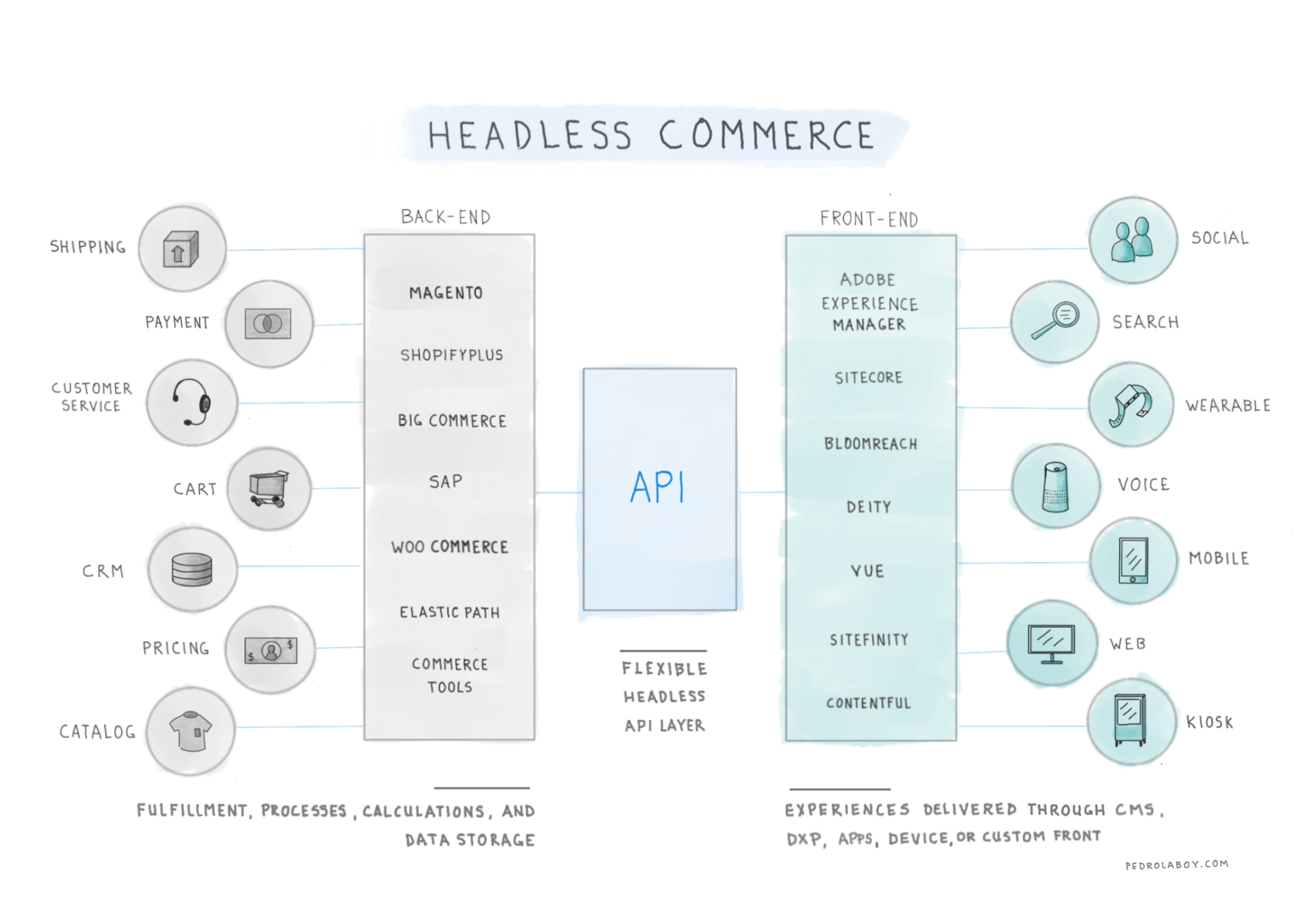
Headless commerce decouples back-end platforms responsible for fulfillment, operations, processes, calculations and data from front-ed platforms responsible for delivering experiences through technologies such as CMS (content management systems), DXPs (digital experience platforms), PWAs (progressive web applications) or custom solutions. One can say that the back-end is “headless” and front-end offers multiple “heads.” This is made possible through the use of a flexible API layer
Notebook Thoughts: Media Agencies’ Ansoff Matrix
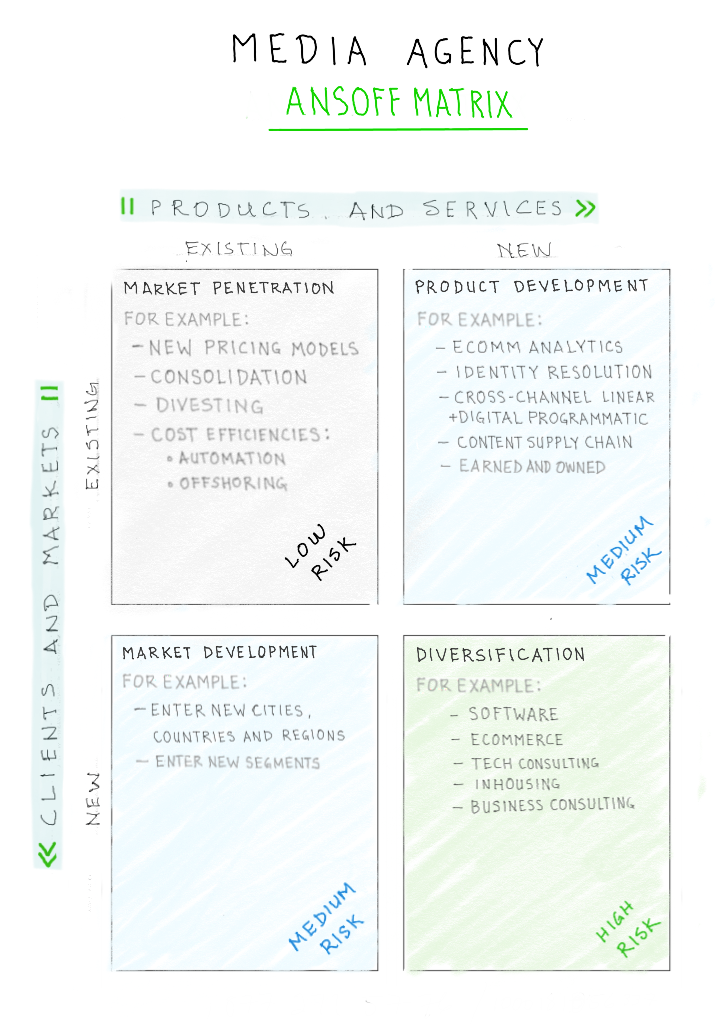
Recently, I was having a conversation with a friend about strategic choices and risks in our industry. The best way to map the two is to think of them in terms of the Ansoff Matrix. Ansoff argued that business growth can only come from two sources: new products and services or/and new clients and markets.
Market Penetration – One can grow existing clients or win new clients in your current market by offering a better value propositions. These could include new pricing models, efficiencies through consolidation or lower costs through off-shoring or automation. This is considered a low risk strategy.
Product Development – One can create new products and services that complement the existing suite. These could include ecommerce analytics, identity resolution, digital/linear cross-channel programmatic or new products around content creation and management. This is considered a medium risk strategy.
Market Development – This one is straight forward. Grow business my entering new markets with existing and/or new products and services. This is considered a medium risk strategy.
Diversification – One can develop brand new products and services that are outside the current areas of expertise. This could include tech consulting, software development, ecommerce management, or in-housing solutions (within expertise but can cannibalize existing services). This is considered a high risk strategy.
Notebook Thoughts: Using Social Media to Measure Brand Health
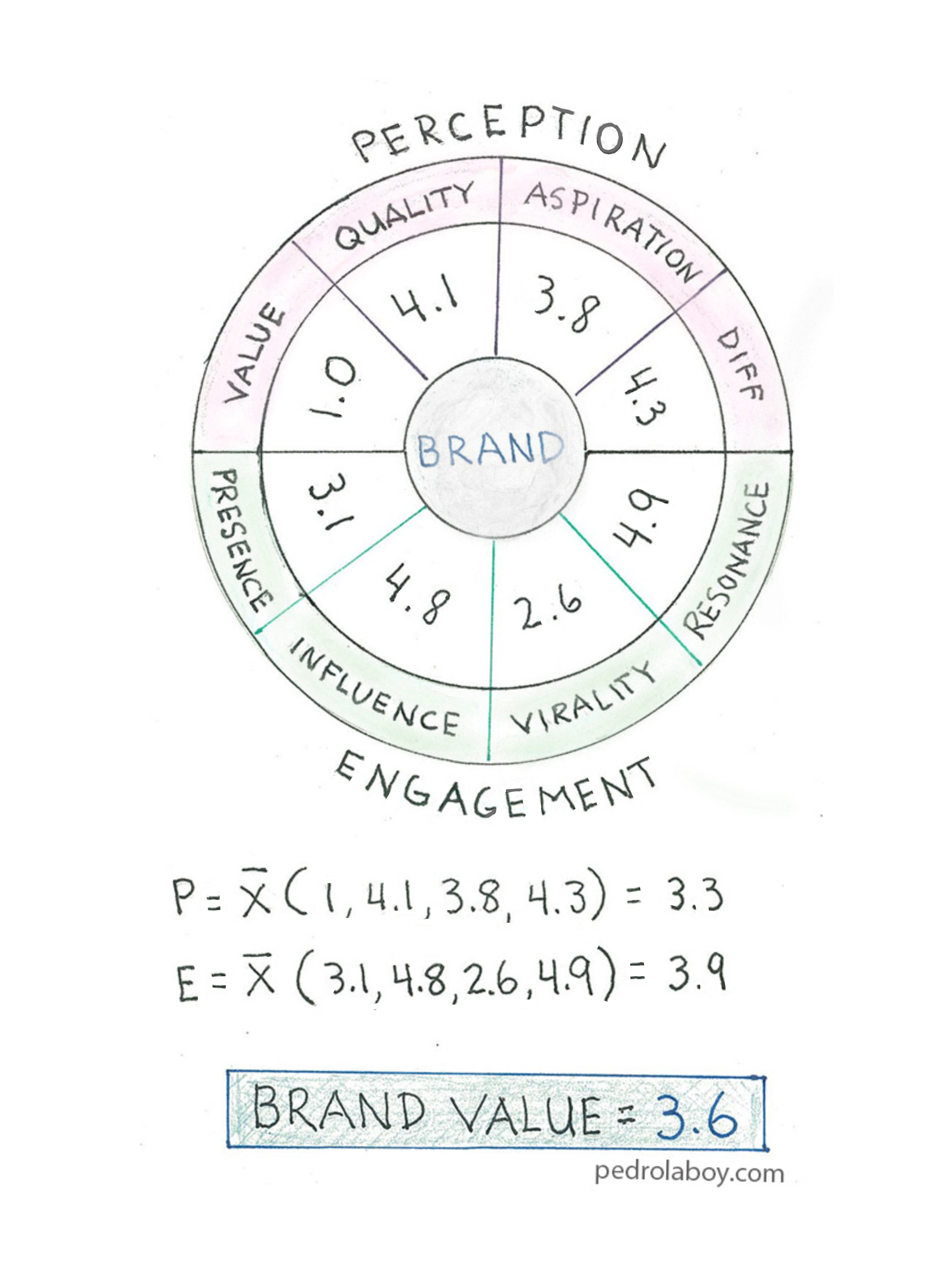
Rather than using sentiment as a proxy for brand health, we should embrace a new model that measures the health of brands in the context of the competitive set and category ecosystem. The model looks at two core areas; Perception and Engagement. On the Perception side we focus on key areas that define thoughts and feelings about the brand. The Engagement side quantifies the reach and strength of the brand and its messaging. All volumes are weighed against sentiment, to ensure that brands are not rewarded for negatively driven spikes in activity. Both Perception and Engagement consist of four distinct areas of measurement:
PERCEPTION
- Value: perception of the usefulness and benefit of a product compared to the price charged for it
- Quality: general level of satisfaction with the way a product works and its ability to work as intended
- Aspiration: expressing a longing or wish to own the product or to be associated with the product’s qualities
- Differentiation: the extend to which social media users draw distinctions between the qualities and characteristics of the brand and its competitors
ENGAGEMENT
- Presence: the size of a brand’s owned social communities weighed with the sentiment expressed by the community members toward the brand
- Influence: the ability of a brand to earn unaided mentions as well as have its messaging amplified and shared by the social media community
- Virality: the number of unique people engaged in conversations with or about the brand; weighed with the sentiment expressed by those users
- Resonance: the ability of a brand to engage users with its content and elicit reactions from them
Notebook Thoughts: Understanding Marketing Attribution
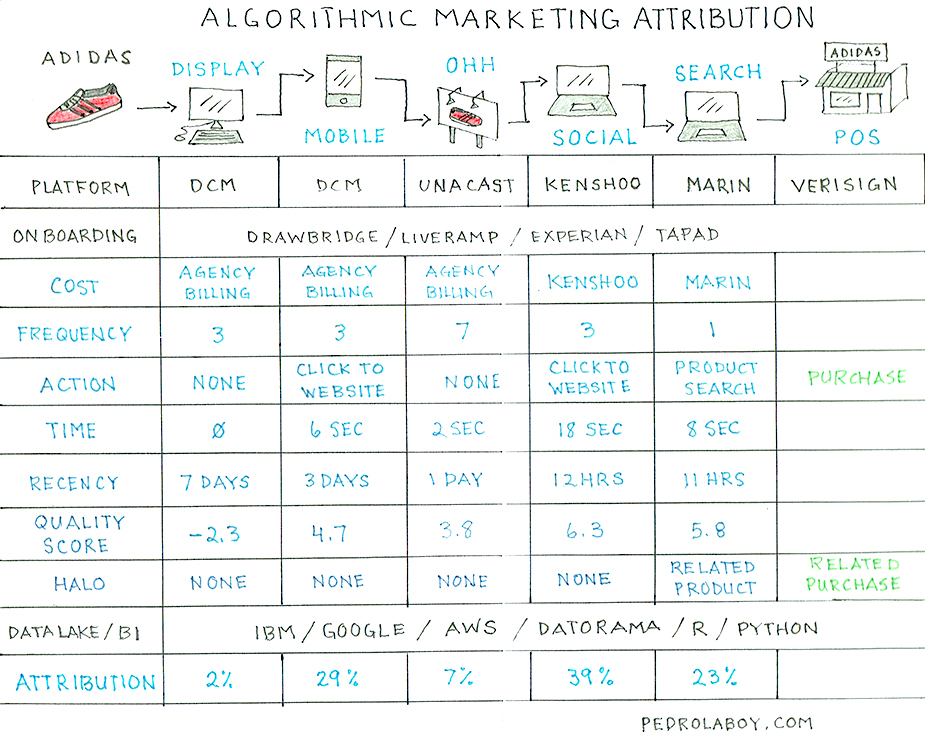
Algorithmic or Probabilistic Attribution uses statistics and machine learning to determine the probability of conversion across marketing touchpoints. In other words, how much of a conversion should be attributed to each channel. In order to keep things simple, I randomly chose a few variables—out of dozens or more—that could go into our model. Let’s go through the rows one at a time.
Touchpoints – This is a mix that includes online as well as offline touchpoints.
Platforms – These are some of the platforms that can be used to collect the data for each touchpoint.
Cost – Cost is one of our most important variables since it helps us determine ROI. Just because something is effective does not meant it is efficient.
Frequency – How many times was our ad/content served to the prospect.
Action – Did the prospect take any action upon viewing our content (i.e. click on it, etc.).
Duration – What is the duration of an engagement? In this example, our prospect spent 6 seconds on landing page after clicking on a mobile ad. Also, we used technology to determine that the prospect looked at an OHH ad for 2 seconds.
Recency – When was the last engagement before conversation. The closer the recency between touch points the higher the weight to the precedent one. Here we see that the prospect conducted a product search within the hour after he/she engaged a social ad/content. Thus, “Social” would get a larger attribution.
Quality score – This a variable that you don’t see often that is extremely important. What is the quality of the ad/content? Was the ad place next to undesirable content? Was the engagement likely from a bot?
Halo – Was there a “halo effect?” That is, did the prospect take a secondary action of value to the brand. In this example, the prospect did a search for a related product and ended up buying that product in addition to the one advertised.
Data Lake / BI – This is the infrastructure needed to process the data and run the machine learning models.
Attribution – Self-explanatory.
Notebook Thoughts: The Marketing Technology Stack
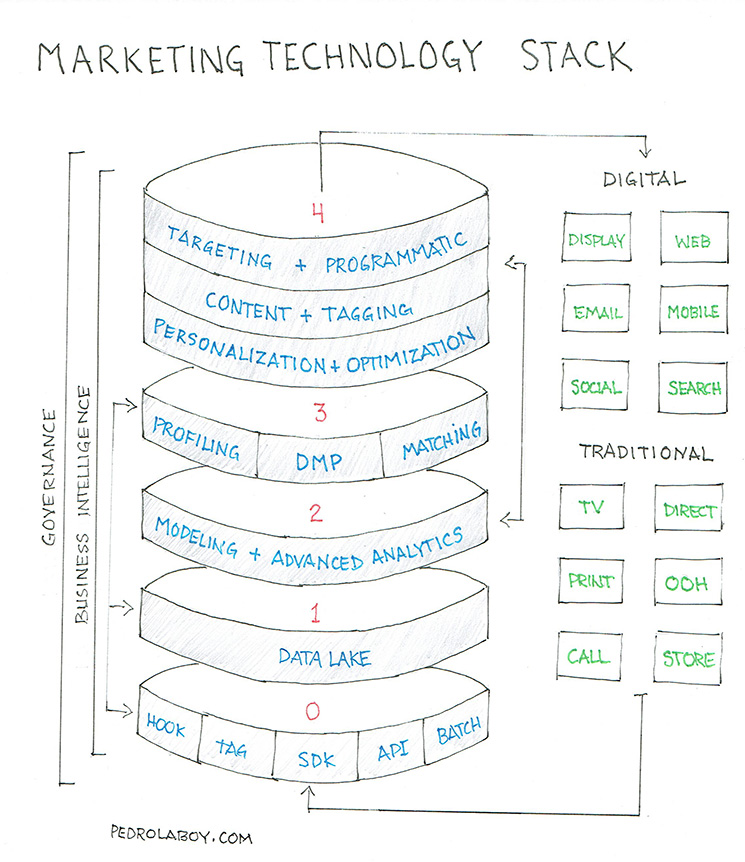
- DATA – The Data Infrastructure employs a data lake to ensure scalability, speed, and flexibility. Data integration covers all techniques to connect all varieties of structured, semi-structured, and unstructured data.
- MODELING – The Modeling layer is the environment to facilitate advanced models and analytics. These include: Marketing Mix Models, Machine learning, AI, Deep Learning, Segmentation, LTV, Attribution modeling, and many more. The key to this layer is to have the analytics environment and tools needed to generate these models (e.g. Python and R).
- PROFILING – The profiling layer is the part of the stack in which we attribute data, metrics and measurable behaviors to build segments and individual profiles (in instances where we collect this data). We can also use our data for matching or adding profiles from 3rd party vendors.
- PERSONALIZATION – This Personalization layer is the part of the stack which leverages models and data to deliver content and experiences based on behavior and preference. We use the audience information from our DMP and profile creation to store preferences and deliver against those as well.
Notebook Thoughts: A Data Science Approach to Marketing
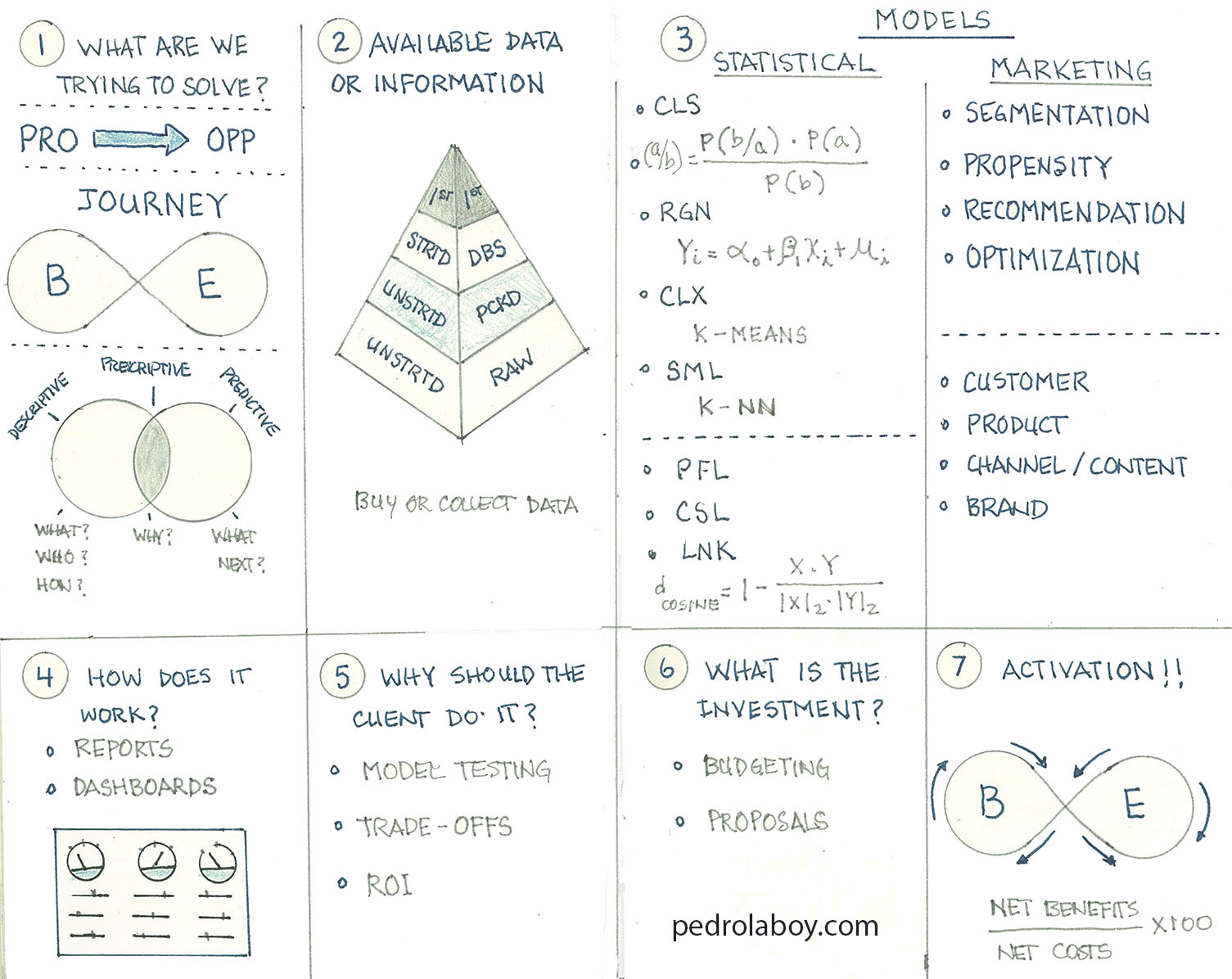
- Why, how, who and what are we trying to solve for? Are we solving a problem or seizing an opportunity? How does it align to the consumer journey?
- Do we have the required data? Are we buying or collecting? Is it structured or unstructured? What about variety, velocity, veracity and volume of data?
- What are the appropriate statistical model? Classification, regression, clustering, similarity, etc.? What about marketing models? Segmentation, propensity, etc.?
- What is the deliverable and how does it work? Are we delivering through dashboards? Will it need to be real time?
- Why should the client move forward with the recommended solution?
- What is the investment required?
- How are we going to test and optimize our proposed solution?
Notebook Thoughts – Mapping Marketing ROI
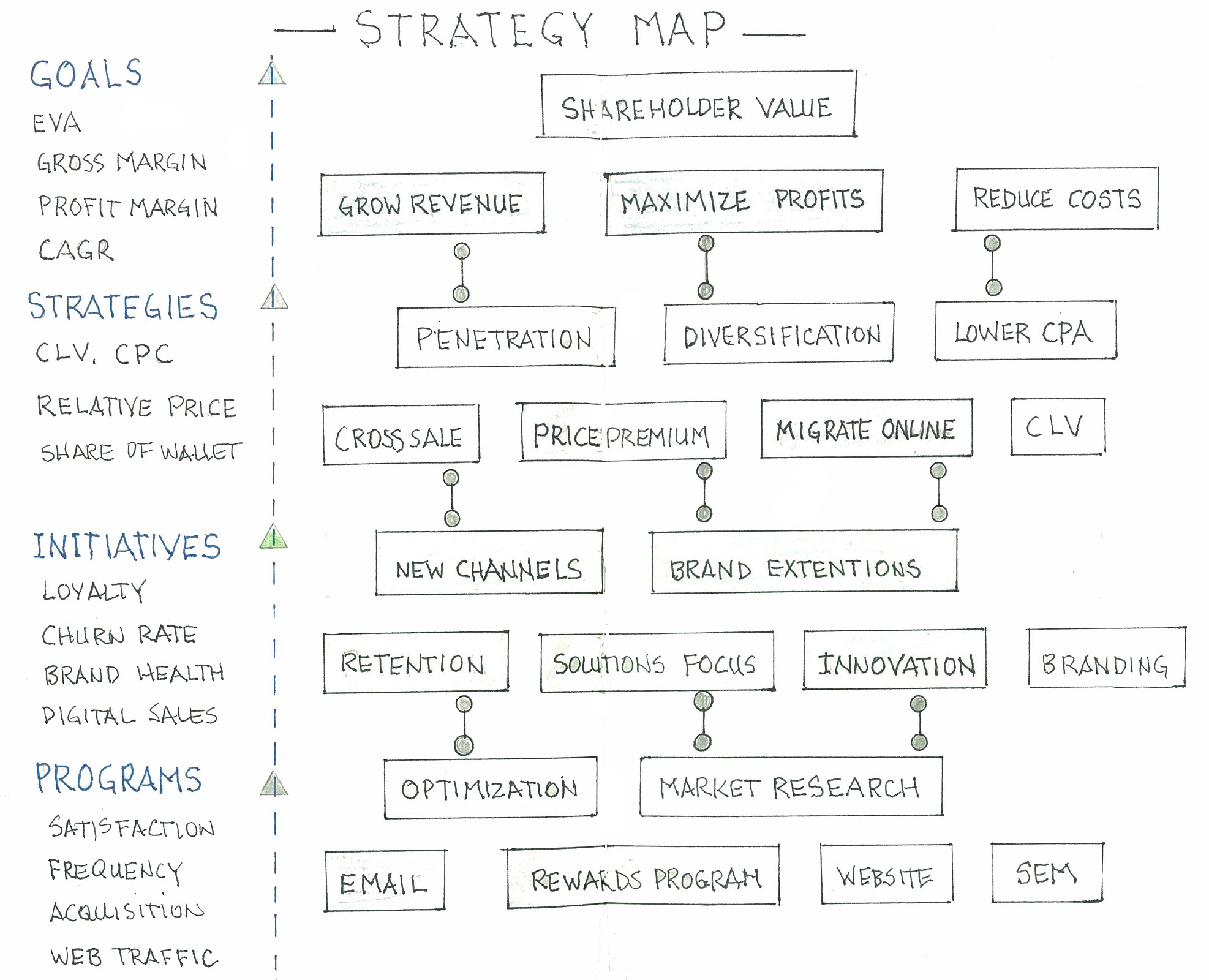
Mapping marketing ROI should always start by defining business goals and measures of success. Marketers should then align programs, initiatives and strategies to the theses goals—with each category having its own benchmarks and goals. These measures should fall into two categories: measures of success and leading indicators to these measures of success.
Notebook Thoughts – Building a Loyalty Program Simulator
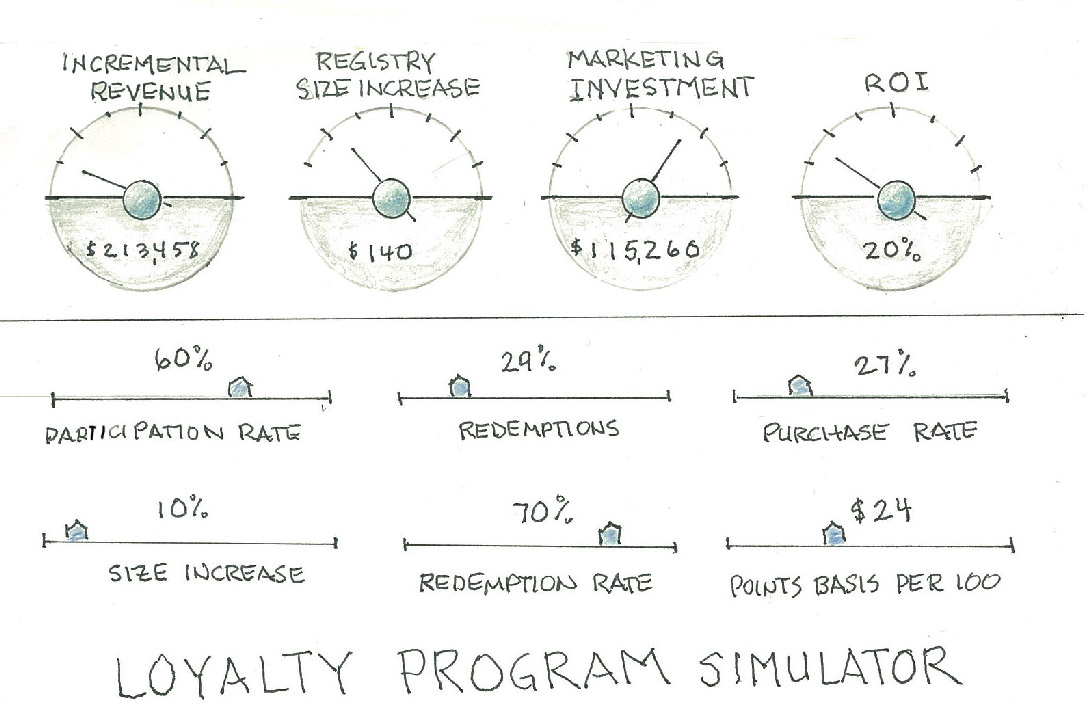
When possible, brands should use simulation to forecast the ROI of marketing programs and initiatives. The above is a sketch/draft of a loyalty program simulator I crafted for one of the largest home furnishings brands in the world.
Notebook Thoughts – Understanding Marketing Funnel Types
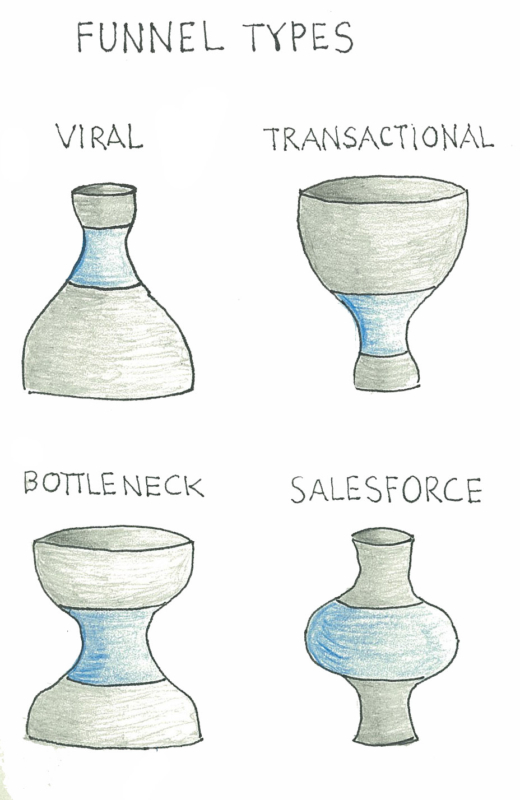
Although it is important that brands define customer relationships through the lens of the consumer journey, it is helpful sometimes to think of funnels when trying to optimize customer acquisition. Brands lacking a strong acquisition strategy tend to fall into one of four funnel types: Transactional, Viral, Salesforce, Bottleneck.
Transactional – Typically commodity, price-inelastic brands with focus on a low cost product or service but not a quality product nor user experience.
Viral – A popular product or service where the brand is unprepared to handle the high demand. Products are often out of stock or ecommerce website crashes because it cannot handle volume. Customer support also falls short.
Salesforce – Typically a B2B brands where transactions are driven by its salesforce but lacks both a strong marketing strategy or product/customer support.
Bottleneck – This is the opposite of the Salesforce Funnel. Where marketing and customer support are very strong but the salesforce infrastructure cannot handle the volume of transactions.

